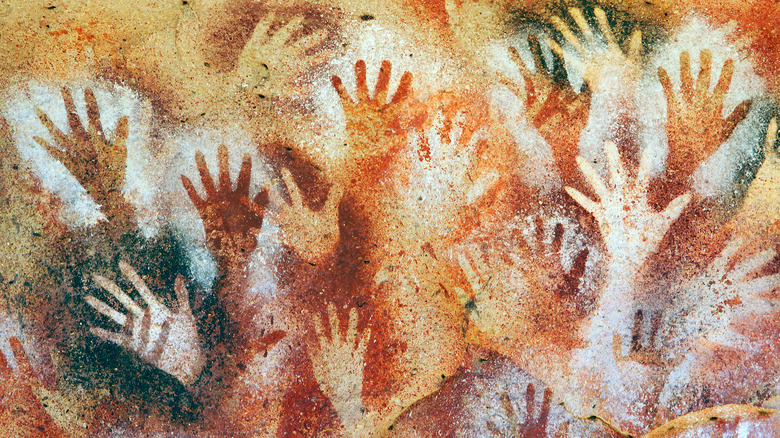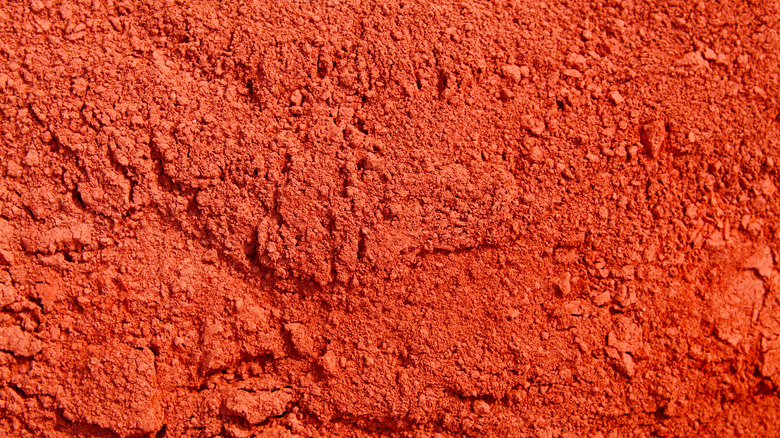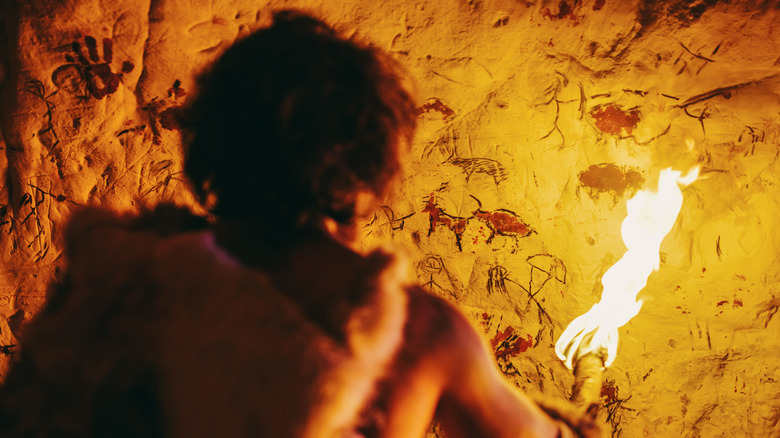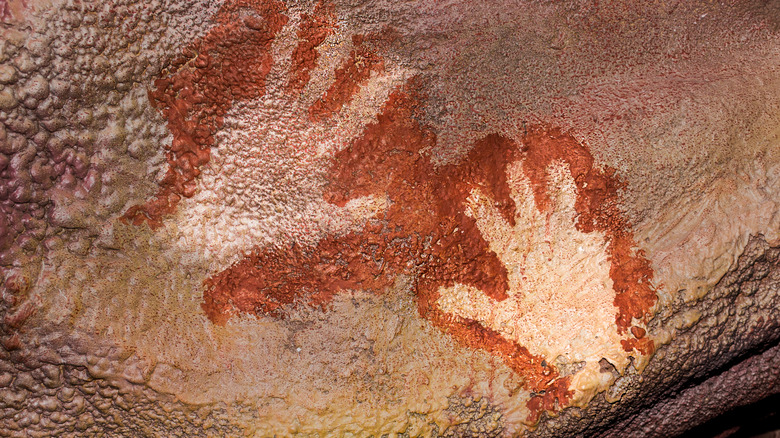Hand Stencils: Humanity's Oldest Art Form Explained
For those readers who have kids, one of the easiest art projects to do with them is make Thanksgiving hand turkeys. Just slap their hand on a piece of paper, draw lines around the fingers, lift up, add decorations, maybe a red wattle dangling from the throat, and bam: instant turkey. Kids might not even need guidance to start this kind of art project. You just might recall tracing your hand on a piece of paper when you were young, spontaneously, for kicks, enshrining in that desiccated and flattened piece of bleached tree the foremost of human tools needed to cast the entirety of civilization: fingers and an opposable thumb.
Should it be so surprising, then, that some of the earliest human art was these kinds of hand stencils? Not on paper, of course, but cave walls, using red ochre mixed with water and animal fat, then blown from a hollowed-out tube onto a hand placed on the wall, as the Encyclopedia of Stone Age Art explains. This creates what's called a "negative hand stencil," as the hand, when removed, leaves a hand-shaped space the color of the natural stone, surrounded by crimson.
We're talking tens of thousands of years ago, by the way. In 2014, the oldest stencil was dated to about 37,900 BCE, in Indonesia, as New Scientist reported. In 2021, another Indonesian find was dated a stunning 7,600 years earlier, to 43,500 BCE, per Smithsonian Magazine.
Red ochre: source of humanity's first intercontinental artform
Not all ancient handprints left in caves were negative hand stencils. Some were prints, which again, if you have kids, you would understand: lacquer the palm with a bunch of paint and smack it on a surface. Bam: instant mess.
But first, our ancestors had to discover red ochre, also called hematite, a glittery, iron-rich mineral, as Discover Magazine explains. Red ochre is still used today by African tribes such as the Himba for beautification and sunscreen, per CNN. And the earliest archaeological use of the mineral? As far back as 285,000 years ago, per the Conversation. At some point between then and the appearance of the first hand stencils, our ancestors crushed the red ochre in a bowl, mixed it with water like a watercolor, added a gummy adhesive substance, and got creative. Fast forward 45,000 years and it's Sistine Chapel time.
Hand stencils aren't found in only one location. From the U.S. down to Argentina, to Spain and France, out to Borneo and Sulawesi in the Indonesian archipelago: they're absolutely everywhere. The Bradshaw Foundation has an excellent, comprehensive list of sites, including Chauvet, France, Cuevas de las Manos in Argentina, and East Kalimantan, Borneo, the last of which contains over 1,500 stencils. Numerous other sites also contain depictions of animals like boars, mammoths, gazelles, humanoid figures, and abstractions like swirls or googly-eye-looking things. This latter artwork literally spans the globe, from Scandinavia to Australia, China to South Africa.
Marks of ritual, storytelling, hunting, magic, or plain old fun
Naturally, one of the first questions that historians, archaeologists, and ethnographers ask of hand stencils is, "What do they mean?" to which we can reply, "What does it mean when your 3-year traces her hand?" In the latter case, it doesn't "mean" anything other than the satiation of curiosity by way of kinesthesia — physical learning through play. Such equivocations don't explain the pervasiveness of hand stencils, though. One instance is an outlier, but repeated instances across multiple continents over tens of thousands of years? Big difference. Have humans always felt compelled to trace their hands?
The most common explanation for ancient hand stencils is ritual and/or storytelling, which admittedly makes sense. An article on the Royal Society Publishing website goes one step further and postulates that hand stencils form a type of mimesis, a sign language that worked in conjunction with gatherings before hunts and funereal ceremonies, similar to plains-based Native Americans. Because such artwork is in caves, as CNN points out, it has to be viewed in the context of shadowy projections on the walls, hand puppets, fireside story time, and the like. "Sympathetic magic" is another explanation, as explained by Psychology Today. More often this is attributed to drawings of non-human animals, though, whereby painting them constitutes an attempt to understand and dominate.
Another, simpler explanation also makes sense. Perhaps the hand stencils are just a message sent to other peoples and through time: "We were here."
The mystery of so many missing fingers
The mystery of hand stencils deepens when we consider that many of the hands are missing fingers. In Grotte de Gargas in Hautes-Pyrénées in France, as Science Alert says, 114 stencils out of 231 made by 45-50 people are missing fingers. In Cosquer Cave in France, 28 out of 49 hands are missing fingers. In Maltravieso, Spain, it's 61 out of 71. Archaeologist Mark Collard of Simon Fraser University explains it as "reasonably common behavior" of "finger amputation for the purposes of religious sacrifice." Trauma strengthens social bonds, the reasoning goes, no matter how debilitating it would have been to the group for individuals to miss their key tools. In modern time, 121 ethnographic groups, such as certain Aboriginal Australian peoples, cut off fingers to express grief, mark vocations, denote marriage, or convey punishment. Frostbite is another possible culprit.
The University of Chicago Press, though, has an alternative explanation that certainly fits modern parental experiences: it was done by kids messing around. They, or adults, used the back of their hands, not their palms, and curled their fingers down to play around with different shapes. Besides, frostbite or Raynaud's disease, which restricts blood flow and can result in amputation, usually doesn't consume entire fingers.
Regardless, we may soon lose our chance to learn from such absolutely invaluable testaments to our past. Climate change, per Live Science, is causing the specters of our ancestors to "blister and peel" off cave walls.



